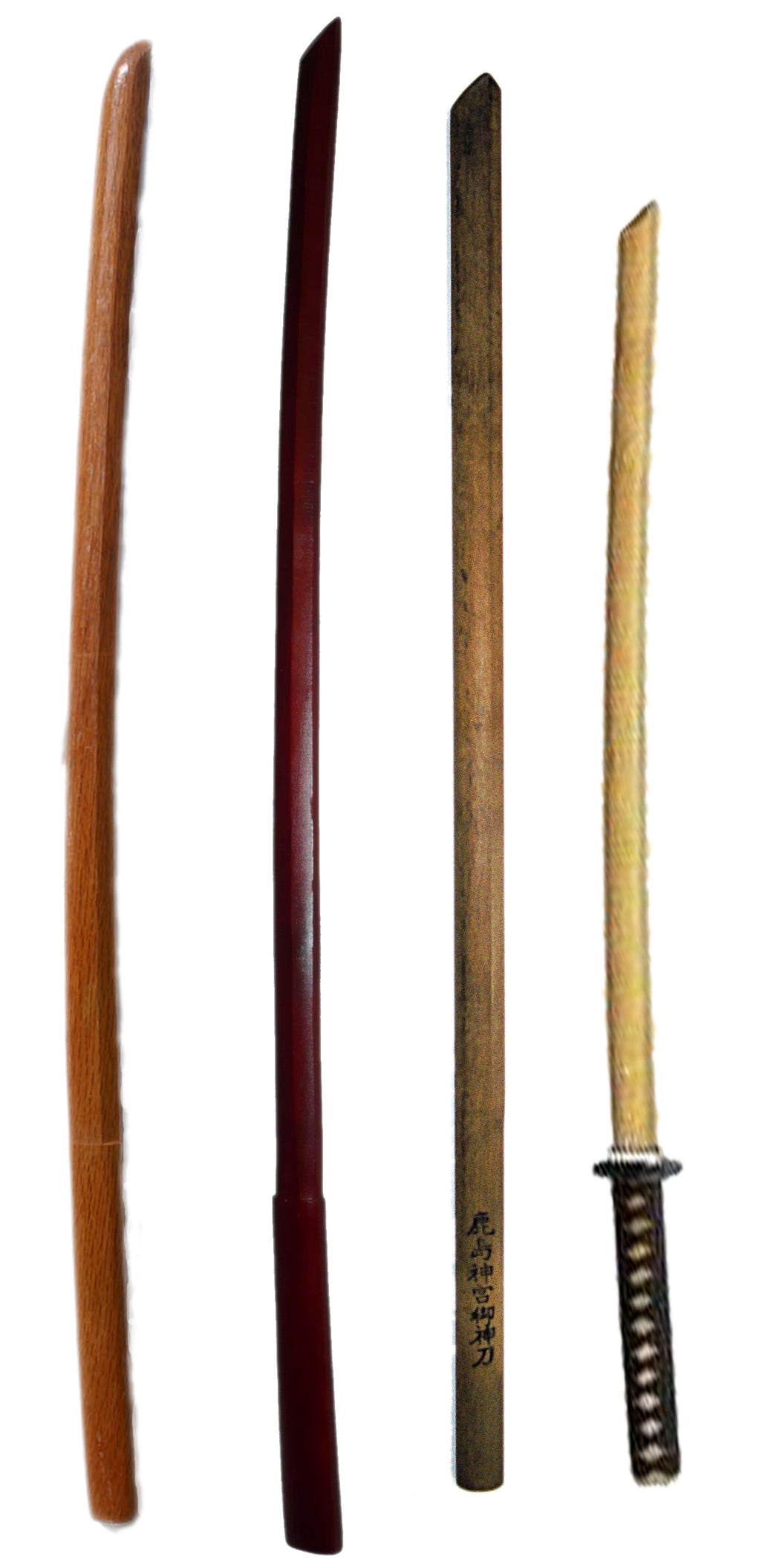Ihr Warenkorb ist leer


The shinken and bokken are two traditional Japanese swords that have been used in martial arts for centuries. Specifically, practitioners of iajutsu -- the martial art of unsheathing and drawing a sword -- and practitioners of tameshigiri -- the martial art of cutting practice targets -- often use these swords. But while the shinken and bokken feature a similar size and shape, they are two completely different swords with their own unique features.
Overview of the Shinken
The term "shinken" means "live sword," which is its defining characteristic. Although the shinken is used in martial arts competitions, it still features a real blade, which is traditionally made of high-carbon tamahagane steel. Even the blade of the shinken is sharpened to a fine edge, allowing it to cut more smoothly through the practice targeting during tameshigiri.
It's important to note that there are different types of shinken. Gendaito, for example, are considered the highest-quality shinkens on the market. Today, there are only about 250 bladesmiths who make them. Due to their rarity, gendaito shinkens are incredibly hard to find, and even if you're able to find one, you'll have to pay a premium price to buy it -- usually about $6,000 to $10,000 for just the blade and even more for the complete sword.
Overview of the Bokken
The bokken, while also being made in Japan, isn't the same as the shinken. The term "bokken" literally means "wood sword." Unlike the shinken, the bokken isn't made of metal, nor does it feature a live blade. Instead, it's made entirely or mostly of wood, meaning it can't feature a sharp edge. The bokken still features a similar shape and size as the shinken -- as well as other traditional Japanese swords like the katana -- but it doesn't have a live blade.
Practitioners of Japanese martial arts often prefer using the bokken over other swords because it reduces the risk of self-injury. Since the bokken is made of wood, there is little or no risk of a practitioner accidentally cutting himself while wielding and using it. With that said, the bokken isn't a suitable sword for certain Japanese martial arts. Tameshigiri, for example, requires the use of a sword with a live blade. Otherwise, practitioners won't be able to cut through the practice target.
The shinken and bokken are similar in the fact that they are both used in Japanese martial arts. Of those two swords, however, only the shinken features a live blade with a sharp edge.